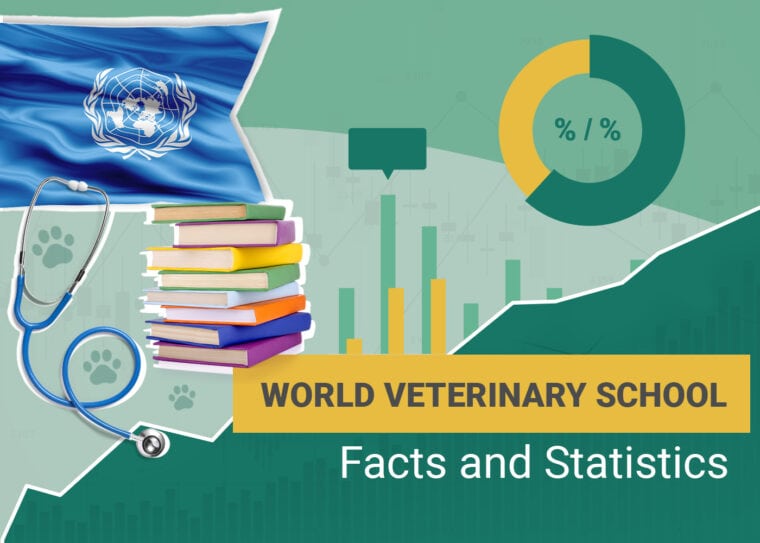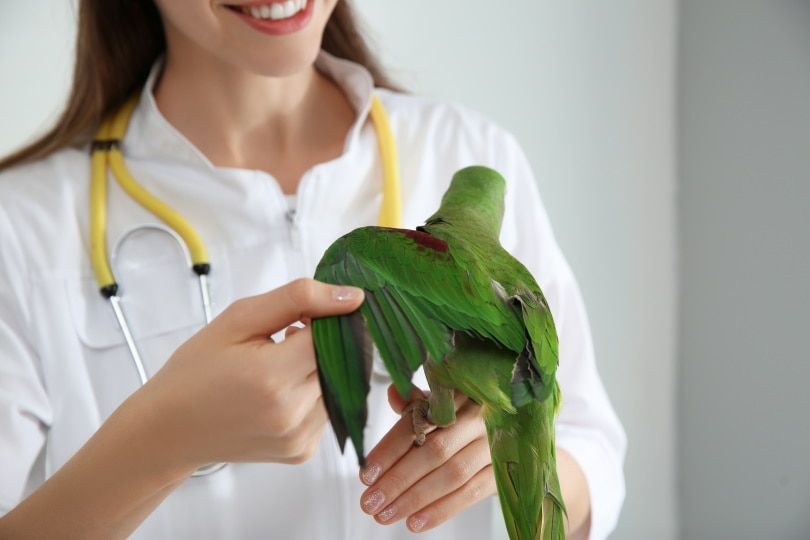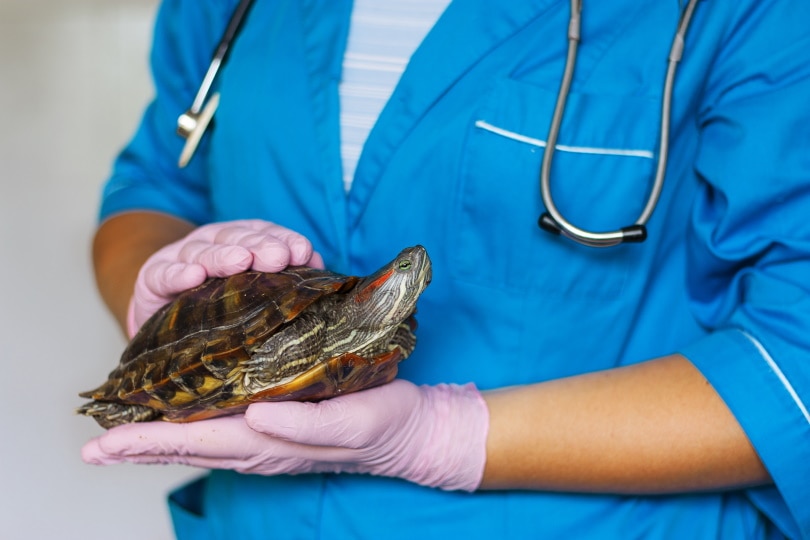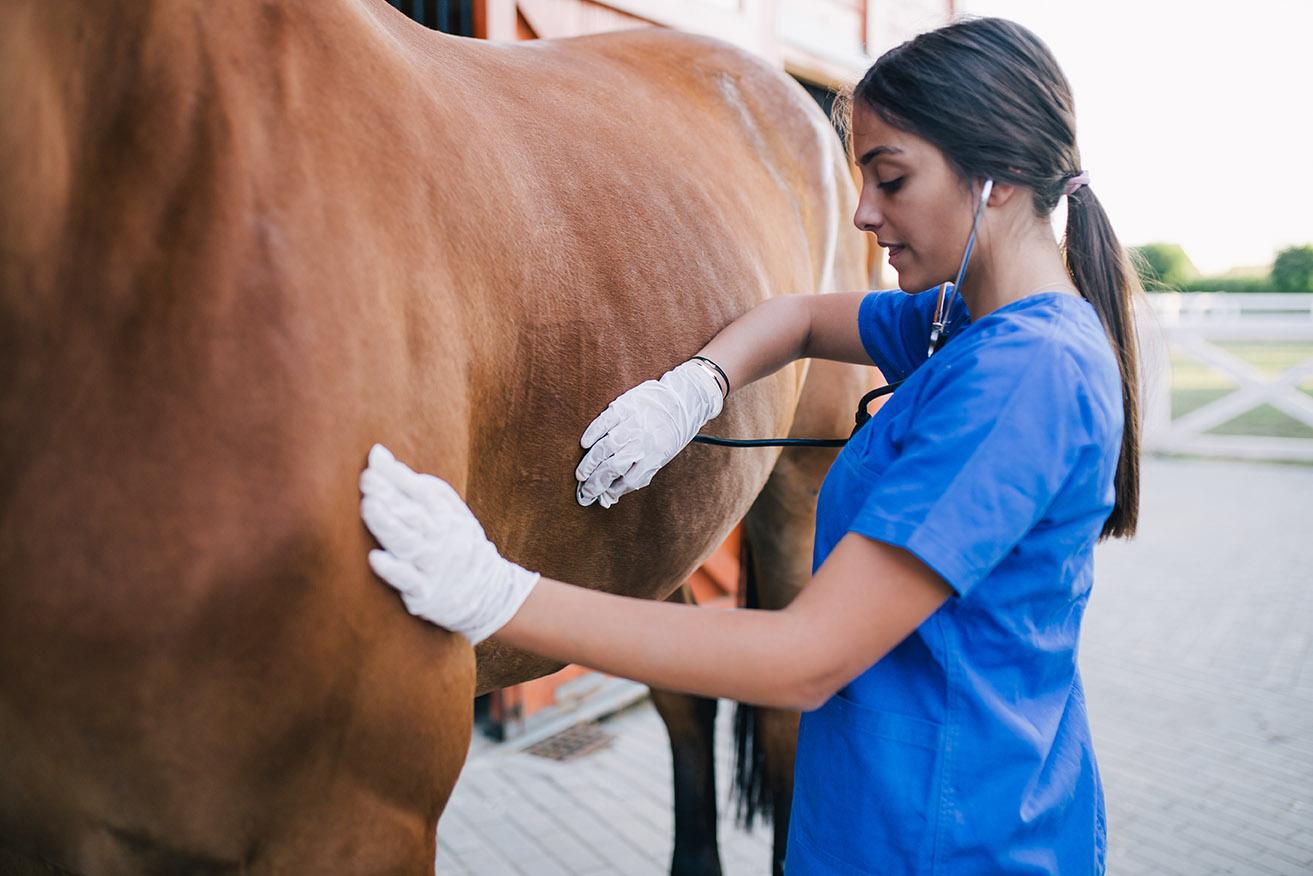
Click to Skip Ahead
Note: This article’s statistics come from third-party sources and do not represent the opinions of this website.
Veterinarians have important jobs. They are instrumental in caring for our pets and helping to prolong and even save their lives in many cases. Veterinarian programs take four years to complete after completing 4 years of undergraduate work.
If you want to become a veterinarian or are just curious about the veterinary industry and how it all works, read on.
The 16 Veterinarian Statistics
- Veterinary programs take 4 years.
- To become a vet, a DVM or VMD is necessary.
- A BSc degree is usually required.
- Being a vet in the U.S. requires a license.
- There are 32 accredited colleges or schools of veterinary medicine in the U.S.
- The tuition for U.S. resident students for 4 years in 2022 was $170,742 to $289,597.
- Approximately 3,200 students graduate from veterinary school every year.
- Between 2022 and 2031, Canada is expected to have 5,000 open veterinary positions but only 4,300 applicants.
- The average starting salary in 2023 for new graduates was $124,295.
- In 2023, 95.7% of new graduates found work.
- 40% of veterinarians who have worked for 10 years are thinking of leaving their jobs.
- 67.3% of veterinarians in private practice are women in 2024.
- From 2020 to 2030, employment for vets is expected to grow by 20%.
- Most US veterinarians make approximately $3,183 weekly.
- The U.S. has the highest salaries for vets in the world.
- In 2024, Oregon veterinarians are paid the highest salaries.

Veterinary School Facts & Statistics
1. Veterinary programs take 4 years.
(BLS)
Before applying to veterinary school, you have to complete 4 years of undergraduate work and focus on the prerequisite courses required for entry. Completing a veterinary program can take about 4 years, including labs, classroom, clinical work, and internships.
Typically, 3 years are spent in labs and classrooms, and the last year involves clinical rotations at vet hospitals or clinics.

2. To become a vet, a DVM or VMD is necessary.
(BLS)
This is a doctor of veterinary medicine or Veterinariae Medicinae Doctoris, and it must be obtained from an accredited college of veterinary medicine. If you work for the state or federal government as a veterinary professional, you’ll need to pass a licensing exam.
3. A BSc degree is usually required.
(BLS)
A bachelor’s degree in sciences, preferably in biology, is required to get into a veterinary program. It’s a highly competitive field of study, and some colleges prefer students to have studied agriculture or have experience working with animals at an animal shelter or farm or in some other capacity.
However, each school has different requirements, and you don’t have to be a pre-vet major in college to get into veterinary school.
4. Being a vet in the U.S. requires a license.
(BLS)
Once a student has graduated and wants to become a practicing veterinarian, they must pass the North American Veterinary Licensing Examination through the International Council for Veterinary Assessment.
They must also pass a state exam, depending on which state they want to practice in. When veterinarians move to other states, they have to take the new state’s exam to become licensed.

5. There are 32 accredited colleges or schools of veterinary medicine in the U.S.
(AAVMC-FAQs)
All these schools are accredited and members of the American Association of Veterinary Medical Colleges (AAVMC). There are also five Canadian and 15 international veterinary schools that are members, as well as five U.S. departments of veterinary science and six U.S. departments of comparative medicine.
6. The tuition for U.S. resident students for 4 years in 2022 was $170,742 to $289,597.
(AAVMC-Cost Comparison Tool)
These figures depend on which college you attend and whether you factor in housing and other living expenses. The least expensive colleges are North Carolina State University, Purdue University, and Iowa State, and the most expensive is the University of California, Davis.
7. Approximately 3,200 students graduate from veterinary school every year.
(AAVMC-FAQs)
Compare that number to the 15,157 veterinary students who were studying at U.S. veterinary schools in 2023. In the 2012–2013 school year, only 11,255 students were enrolled. (AVMA-News).

New Graduate Veterinary Statistics
8. Between 2022 and 2031, Canada is expected to have 5,000 open veterinary positions but only 4,300 applicants.
(CBC)
Like many countries, Canada has a shortage of veterinarians. The number of qualified applicants has declined in recent years, and rural areas are impacted the most. When pet owners cannot drive long distances to see a vet, some self-medicate their pets, which can lead to additional complications.
9. The average starting salary in 2023 for new graduates was $124,295.
(AVMA-News)
In the United States, the debt-to-income ratio for recent graduates entering the workforce was 1.3:1, which has declined for the last 3 years. Most of the graduates enter private practice, but 24.6% get internships, and 2.4% get public sector jobs.
10. In 2023, 95.7% of new graduates found work.
(AVMA-News)
This is an excellent outlook for new veterinarians! 95.7% of new vets found either full-time work or new opportunities to advance their education up to 2 weeks before graduation.

Veterinary Career Statistics
11. 40% of veterinarians who have worked for 10 years are thinking of leaving their jobs.
(JAVMA-News)
Veterinarians work long hours, and the job shortage has made their work even more challenging. Generation Xers (47%) are more likely to leave their professions, but Baby Boomers (43%) and Millennials (43%) are just as likely to leave.
12. 67.3% of veterinarians in private practice are women in 2024.
(AVMA-Vets)
Women are entering the field of veterinary medicine in larger numbers, but more male vets than female vets become owners or partners. Female vets also tend to be more stressed than male vets (Vetspanel).
13. From 2020 to 2030, employment for vets is expected to grow by 20%.
(BLS)
This job outlook is faster than the average for all other occupations. Over the next 10 years, 5,000 job openings for veterinarians are expected for each year. Many of these job openings will be to fill jobs that have been left vacant due to retirement or vets leaving the positions for other occupations.

14. Most US veterinarians make approximately $3,183 weekly.
(ZipRecruiter)
At the lower end of the pay scale, some vets make $952, but the highest paid vets make $5,654. Vets operating in rural areas make less than those working in large cities, which explains why rural regions need more veterinarians and have trouble retaining them.
15. The U.S. has the highest salaries for vets in the world.
(Vet Service)
The U.S. pays higher salaries to veterinarians than any other country, followed by the United Kingdom and New Zealand. The top veterinary colleges in the U.S. are the University of California, Davis, and Cornell University.
16. In 2024, Oregan veterinarians are paid the highest salaries.
(ZipRecruiter)
Oregon’s annual salary of $191,034 is the country’s highest, but Alaska ($190,094) and North Dakota ($190,064) aren’t far behind! The states that pay veterinarians the least are Florida ($114,548) and West Virginia ($119,285).

Frequently Asked Questions About Veterinarians
What career options are available for veterinary student graduates?
Although most new graduates get into clinical work with companion animals, other career paths are available. Some perform research studies that help animals and humans. Others take on government jobs, particularly with the U.S. Department of Agriculture’s Food Safety and Inspection Service.
Of course, they can also work in zoos, farms, wildlife rescue, or specialize in aquatic, avian, or reptile practices. (AAVMC-FAQs)
What kind of classes do you take in veterinary school?
Students take several courses beyond the expected biology and anatomy, including the following:
This isn’t everything, of course. There will also be classes on ethics, communication, professionalism, and practice management. (AAVMC-FAQs)
What kind of qualities do you need to get into veterinary school?
You should be an animal lover, but the school will also be looking for students who have great communication skills, can run a business, conduct research, and can work in areas such as public health, food supply, and biomedical research.
Students will become knowledgeable on various species and will be able to work in everything from research to medicine and health. (AAVMC-FAQs)

Which classes should high school students take if they want to be vets?
Students should take biochemistry and advanced math, but they also need to have strong writing and communication skills. Most colleges also expect at least 400 hours of work with animals through a shelter, research lab, or veterinary clinic. (AAVMC-FAQs)
What are a few of the benefits of being a vet?
Other than the amazing bonus of working with and helping animals, there are multiple benefits to being a veterinarian.
Conclusion
We hope that these facts and statistics have helped you learn more about what it takes to become a veterinarian. The benefits of becoming a veterinarian definitely outweigh the disadvantages.
If you feel inspired to become a vet, you have an incredibly challenging but rewarding road ahead of you. Whatever happens next is up to you, but as long as you have a strong love for animals and include them in your life, you’ll also have important relationships with veterinarians.
See Also:
Featured Image Credit: Stock-Asso, Shutterstock








